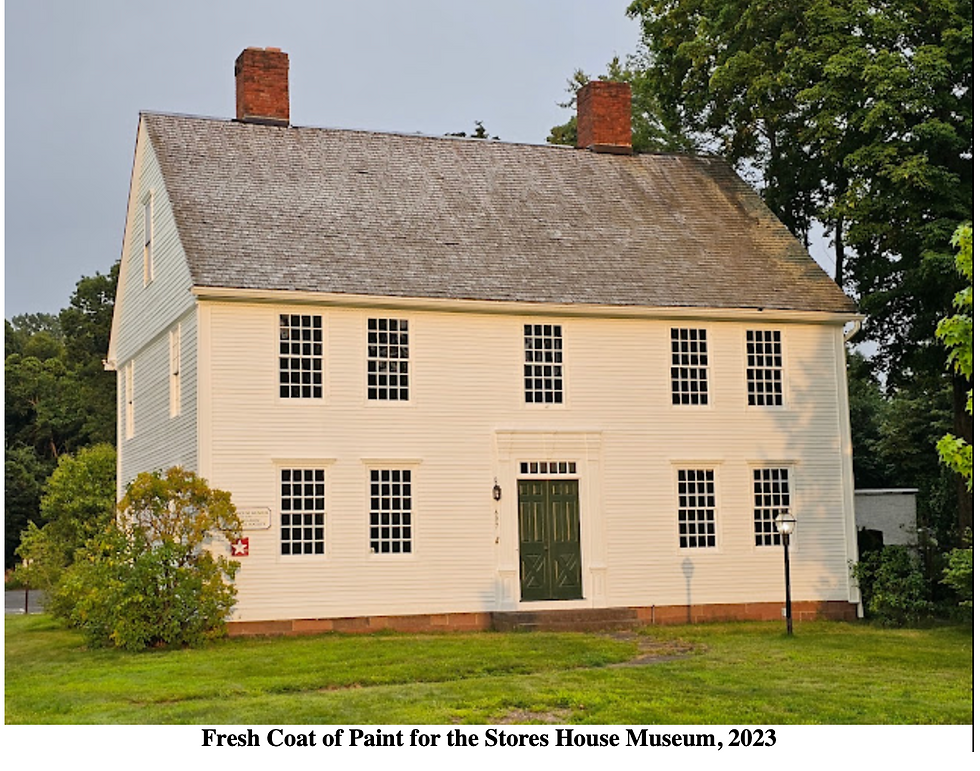- Betsy McKee

- Nov 23, 2023
- 2 min read
During this season of thanksgiving, the Longmeadow Historical Society would like to reflect on what we are grateful for. This kind of review is good for the soul—it reminds us of all the good in the world when the nightly news might suggest otherwise.
We are grateful for generous friends-- over the past year we have received some wonderful new collection objects. A former Longmeadowite sent us a framed silhouette of five of his ancestors, complete with identification on the back! This gift was the impetus for some exploring into the world of silhouettes and several family trees.

Another former local sent us several items from his family, including two crucibles used for the manufacture of eyeglasses. He also gave us some old slide photos which proved invaluable in identifying a stolen object. And, as it happens, both of those donors were classmates at Center School, as discovered in a class photo of 4th graders from 1947! Between the two, they identified almost everyone in that photo. A recent donation brought us a 1930’s era Flexible Flyer sled, used right here in Longmeadow on Blueberry Hill. Two other local families have loaned us items from their families, providing us with more stories to tell about life in the 19th century. We are also thankful for the determined law-enforcement professionals who recovered a target rifle stolen in 1970!


We are also extremely grateful for all of the generous donors who have given us monetary donations. Each and every dollar is used to continue our work—telling the stories of the past. We couldn’t do it without you! Grants have also enabled us to paint the exterior of the building, rehabilitate storm doors, and add energy saving interior storm windows. Another grant from the Pioneer Valley History Network and the Massachusetts Cultural Council allowed us to organize an area-wide open house with four of our sister history organizations on the same day, called “History on the Go!” This event brought visitors from near and far, and helped us to re-establish connections with our neighbors. We plan to do it again next year.


We are also grateful to our friends who have volunteered their time, including acting as docents for open houses. Others have generously shared their expertise: people like an interpreter from a local museum, who shared his expertise with clocks and musical instruments; another local historian who can answer almost any question we throw at him; and a curator who came to look at furniture, but ended up identifying the source of a reverse-painted scene on a wall clock within seconds of walking into the room!
And for all those faithful readers of our weekly History Notes—thank you! With a special shout-out to those extra-thoughtful people who comment on our posts with words of encouragement and praise! We extend our heartfelt wishes for a healthy, happy holiday season with family and friends. -Submitted by Betsy McKee, Longmeadow Historical Society Board Member.
In honor of next week's upcoming Giving Tuesday,
we hope you will consider stopping by the Donations page on our website
and contributing.
Giving Tuesday is an important fundraising day
for small volunteer-based organizations
like the Longmeadow Historical Society.

















